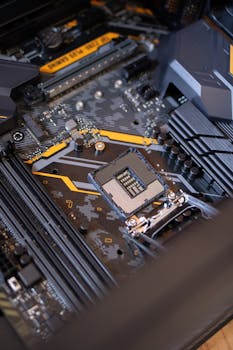+17162654855
+17162654855
IMR Publication News serves as an authoritative platform for delivering the latest industry updates, research insights, and significant developments across various sectors. Our news articles provide a comprehensive view of market trends, key findings, and groundbreaking initiatives, ensuring businesses and professionals stay ahead in a competitive landscape.
The News section on IMR Publication News highlights major industry events such as product launches, market expansions, mergers and acquisitions, financial reports, and strategic collaborations. This dedicated space allows businesses to gain valuable insights into evolving market dynamics, empowering them to make informed decisions.
At IMR Publication News, we cover a diverse range of industries, including Healthcare, Automotive, Utilities, Materials, Chemicals, Energy, Telecommunications, Technology, Financials, and Consumer Goods. Our mission is to ensure that professionals across these sectors have access to high-quality, data-driven news that shapes their industry’s future.
By featuring key industry updates and expert insights, IMR Publication News enhances brand visibility, credibility, and engagement for businesses worldwide. Whether it's the latest technological breakthrough or emerging market opportunities, our platform serves as a bridge between industry leaders, stakeholders, and decision-makers.
Stay informed with IMR Publication News – your trusted source for impactful industry news.
Energy

**
The world of computing is on the brink of a paradigm shift. For decades, silicon has reigned supreme as the foundational material for microprocessors and memory chips. However, researchers have now achieved a groundbreaking milestone: the creation of the first functional computer not based on silicon. This revolutionary device, built using carbon nanotubes (CNTs), represents a significant leap forward in overcoming the limitations of Moore's Law and paving the way for exponentially faster and more energy-efficient computing.
Moore's Law, the observation that the number of transistors on a microchip doubles approximately every two years, has driven the exponential growth of computing power for decades. However, as transistors shrink to the nanoscale, the physical limitations of silicon become increasingly apparent. Silicon-based chips are facing challenges like leakage current, heat dissipation, and manufacturing complexities. This has led scientists to explore alternative materials and architectures.
Carbon nanotubes, cylindrical molecules made of carbon atoms, emerge as a promising candidate. These incredibly tiny structures possess exceptional electronic properties:
These advantages make carbon nanotubes an ideal material for building next-generation computers.
A team of researchers from [Insert Research Institution Name Here] recently announced the successful construction and operation of a fully functional computer built using carbon nanotube transistors. This is not a theoretical demonstration but a tangible, working system capable of performing basic computational tasks. The achievement marks a culmination of years of intensive research and development in material science, nanotechnology, and computer architecture.
The creation of individual CNT transistors is a significant achievement in itself. However, integrating these transistors into a functional computer required innovative architectural solutions. The researchers addressed several key challenges:
The resulting computer, while still in its early stages, demonstrates the potential of this technology. Although its current computational power is limited compared to today's silicon-based systems, its significance lies in its proof of concept. This is the first step towards a new era of carbon nanotube-based computing.
The successful creation of the first non-silicon computer heralds a new era in computing. The potential implications are vast and transformative:
The research team is currently focused on improving the fabrication process, increasing the density of CNT transistors, and developing more sophisticated circuit designs. Future research will also focus on exploring new applications and adapting software and algorithms to fully leverage the potential of this revolutionary technology. The development of CNT-based memory, and improved CNT synthesis techniques, are all crucial next steps.
While the creation of the first non-silicon computer is a monumental achievement, several challenges remain. Scaling up the production of CNT-based computers to a commercially viable level will require further advancements in nanofabrication techniques and significant investment in research and development. Developing robust and efficient software ecosystems tailored for CNT-based architectures will also be crucial for widespread adoption.
However, the potential rewards are enormous. The development of this technology has the potential to revolutionize numerous industries and reshape the technological landscape of the future. The era of post-silicon computing is dawning, and the implications are both exciting and transformative. This is truly a groundbreaking moment in the history of computing, opening doors to possibilities previously only imagined in science fiction.